Free download: Top 10 Natural & Easy Remedies for Joint Pain from Home. Learn these helpful remedies.
Estimated Reading Time: 7 minutes read
Looking for a low impact option to strengthen your knee muscles while reducing pain and inflammation? Then the best course of action may be to hop on a stationary bike for knee pain reduction.
Our bodies crave quality movement!
So much so that several phrases have popped up in health & wellness communities across the globe. Terms such as “motion is lotion,” “rest is rust,” or “use it or lose it” have all come about to mean the same thing.
We need to move to stay healthy! But… what if that movement is painful? Common activities like jogging or even walking can be too hard for our joints to handle. However, there is another option:
The Stationary Bike.
Stationary bikes (recumbent or upright) provide an excellent alternative for those unable to walk, jog, or perform traditional strength exercises.
However, there are several things to remember when using a stationary bike on your journey to healthy knees.
Table of Contents
5 Tips When Using a Stationary Bike for Knee Pain Reduction
While riding a stationary bike is good for knee pain, it must be performed correctly (as with all things) to avoid unnecessary stress or strain.
Follow the tips below to ensure a safe and healthy ride any time you hop on:

Set Yourself Up For Success
How you set up your bike has a huge impact on knee pain and motivation. While bikes are considered low impact and great for osteoarthritis, they are still a repetitive motion.
This means, if things are not aligned properly you may experience pain from overuse.
Let’s make sure everything is set up for success from seat position to pedaling form.
Seat Position:
While sitting on the seat, extend one leg so that the pedal is all the way at the bottom. Pay attention to how much your knee bends when the pedal is at the bottom. Your goal is to have juuuuuust a little bend in your knee.
Things to avoid: your leg is totally straight and locked out at the bottom. This will put more pressure on your knees.
Don’t overcompensate though and have a significant bend in your knee, that puts more pressure on your patella (see image above)
If you do not think the bend is correct the first time, adjust the seat up or down a little. Think of it as Goldilocks: a small bend in your knee is just right.
The caveat on this is if you have pain when you extend your leg too far. Decrease the range of motion a bit by sliding your seat forward. You want to work within your pain-free range of motion and slowly increase as you progress.

This one is meant to be taken literally. It can be really tempting when we start an exercise routine to try to compete with Neil Armstrong, but you don’t want to go too fast too soon.
We have to walk before we run.
Start pedaling at a slower pace at first. Better to be bored with the first workout than to do so much that you can’t even work out for an entire week!
As your body adapts and you get stronger, slowly start to increase the speed.

Start Light
Just like with speed, you don’t want to start off with too much resistance. First, you must find the tempo and resistance you can do without pain. Then, slowly as you gain strength, you can increase the resistance.

Start Off Slow
Start off with short sessions.
Just like with speed and resistance, don’t hop on a bike for an hour the first time you try it! You get positive results by biking consistently, not by going at 1000% all in one day.
Start with something sustainable like hopping on the bike for 5-10 minutes just 3-4 times a week. Then as you gain confidence and strength, you can up the time to about 20 minutes, then to 5 or 6 days a week.
Just remember to give yourself quality recovery time in between biking bouts.

Use It to Complement Your Routine
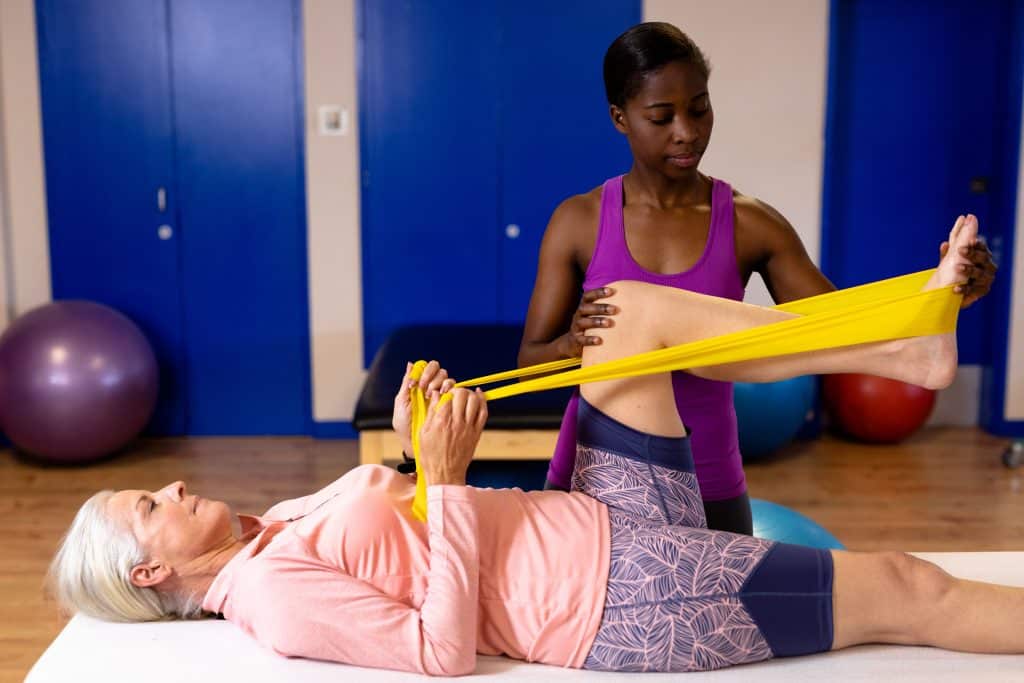
It takes a while to form a habit! One of the best ways to help you consistently use a bike is to add the exercise into your routine!
Find a time of day that you can consistently ride. Morning person? Great! Night owl great! As long as you feel motivated at that time, it doesn’t matter when you bike.
Another tip is to add biking to a workout routine you’ve already been performing at home!
If you are already performing additional rehab, consider using the stationary bike to assist your other daily corrective exercises to help boost the benefits of both!
Additional Frequently Asked Questions When Using a Stationary Bike for Knee Pain Reduction
While biking can be an excellent alternative to walking, running, and more, you still have some more questions before you get started:

Is an Exercise Bike Okay If I Have Bone on Bone?
For people with osteoarthritis, a recumbent stationary bike may be a better option than an upright stationary bike.
A recumbent stationary bicycle is equipped with a larger, chair-like seat that allows the rider to sit back and rest their spine.
The pedals are typically located toward the front, and the hand-grips’ position requires less reaching for a more comfortable experience.
This type of set up may make the difference between exercising and not exercising for those struggling with bone on bone.

Can I Ride an Exercise Bike If I Have Knee Pain?
Shifting to an exercise bike can help reduce knee pain found when walking or jogging, however, if proper form is not used — or the rider pushes past their limits before they’re ready — it can lead to knee pain once again.
Refer back to the previous 5 tips to ensure you are taking the safest approach to strengthen those knees.

How Long Should I Ride the Exercise Bike?
While this answer differs from person to person, it can be noted that every ride should begin with a 3-5 minute warm-up and end with a 3-5 minute cool-down.
This will help transition the joints from sedentary to active and back. As you continue to progress, you may find yourself on the bike anywhere from 30 minutes to an hour 3-5 days a week.
Remember, recovery is also necessary to increase progress… so avoid hopping on the bike for 60 minutes 3 days in a row.
When used properly, the stationary bike offers a multitude of benefits not just in the knee, but for our overall health. When walking or jogging becomes too much, and traditional strength training methods seem too intimidating, hop on a bike and start cruising.
Eventually, you’ll experience stronger legs… and more!

What to do if your Knee Pain is FROM a Stationary Bike?
I’ve got another article for you, my friend! Start with these simple knee exercises that you can do from bed.
Our goal is to help you to feel confident and live life to the fullest. While knee pain might mean you need to change what you do for exercise (at least for a little while), there are so many fun ways to get up and move! A stationary bike can be a great way to help your knee pain and help you stay active!


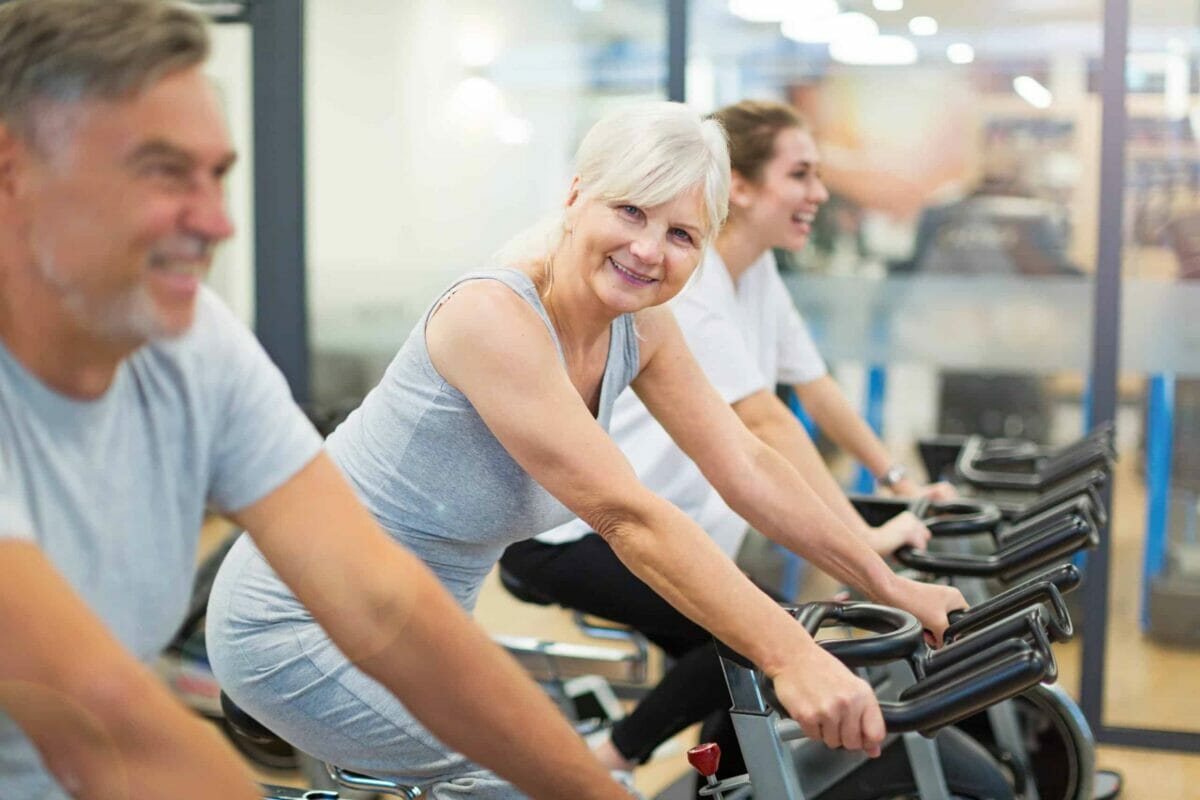







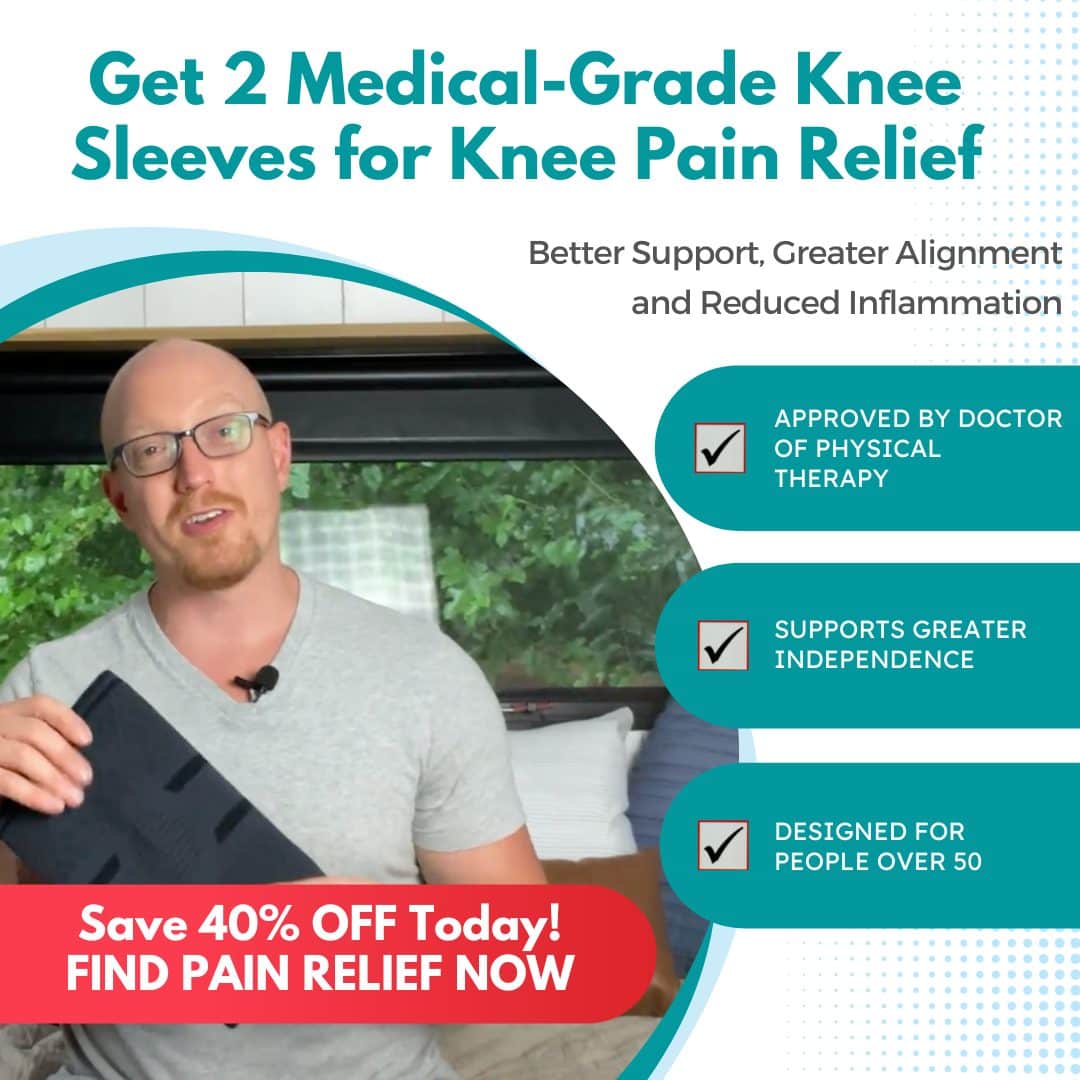
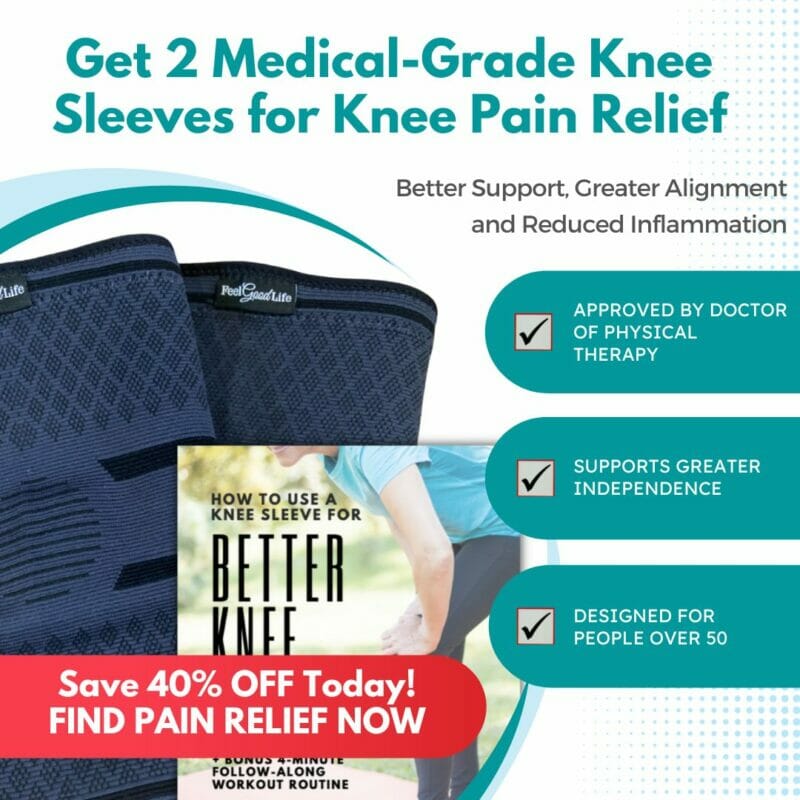
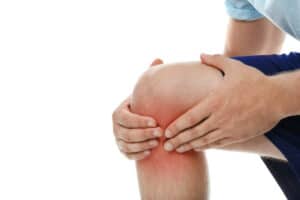
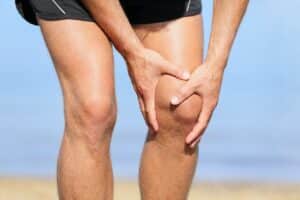
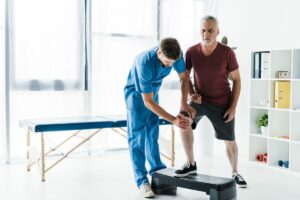

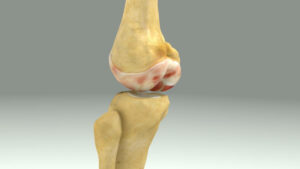

6 Responses
How can I correct knee extension lag contractures ( can’t kick forward)without a Physiotherapist as they aren’t working where I am due to Covid.
Hi Dorothea! Please check out this video: https://youtu.be/CF__sOqfaD4
Can u show me the 3 best excercise for sore knees
Pulled ligament
Sore kneecup
Yes! These exercises are great to start with for sore knees: https://www.feelgoodlife.com/knee-exercises-from-bed/
What is the best exercise for balance problems???
Hi there! I have a full 30 day fall prevention exercise program you should check out! It's free 🙂 Here's the link: https://www.feelgoodlife.com/the-30-day-fall-prevention-challenge-for-seniors/